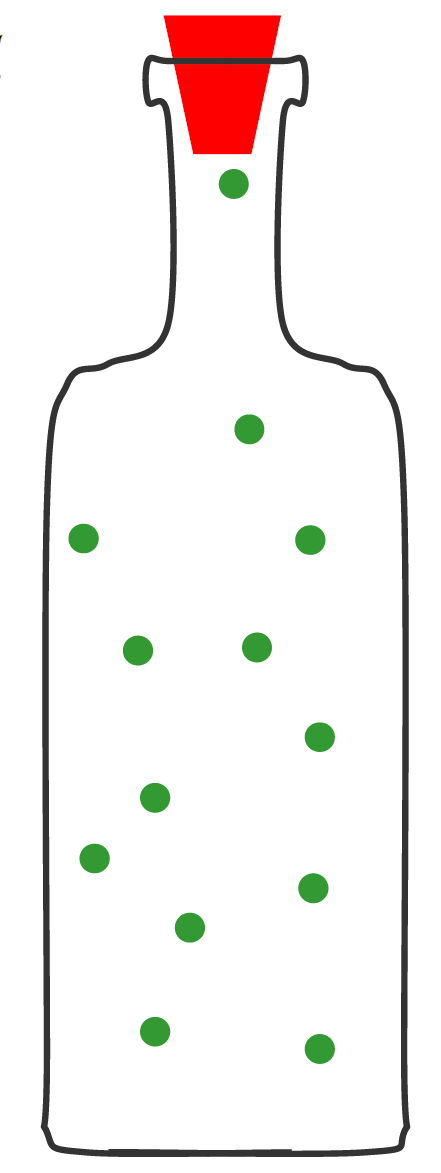What Are Ultra-Cold Neutrons
Ultra-Cold Neutrons (UCN) are moving so slowly that they bounce off solid materials and can be contained the same way you would contain a gas in, say, a metal or glass bottle. A typical UCN velocity is less than 7 m/s, corresponding to a temperature of 3 mK (0.003 K) or a kinetic energy of 300 neV.‡
contained the same way you would contain a gas in, say, a metal or glass bottle. A typical UCN velocity is less than 7 m/s, corresponding to a temperature of 3 mK (0.003 K) or a kinetic energy of 300 neV.‡
Unlike ultra-cold neutrons, fast neutrons are hard to stop. If fast neutrons hit a 4 mm thick nickel plate, about 9 out of 10 will go straight through without any interaction†. The fast neutron has to make a "direct hit" on a nucleus. This is a rare event because the solid-looking nickel is actually small nickel nuclei separated by essentially empty space. The inter-atomic spacing in solid nickel is 250,000 fm, whereas the nickel nuclei are only about 10 fm in diameter. To a fast neutron this looks like like golf balls spaced 1 km apart. As the speed goes down, the neutron becomes more and more likely to interact. Eventually, a speed is reached where the material looks like a solid wall and neutrons bounce back. Ultra-cold neutrons have such a long wavelength that they interact with hundreds of nuclei at a time.
For each material there is a critical neutron velocity below which that material looks like a "solid wall". The table below shows values for some common materials.
‡ In UCN literature, you will find temperature, speed, and energy used interchangeably.
† Assuming a 3 barn total cross section.
| Material | Fermi Potential (neV) | Critical Velocity (m/s) |
| Beryllium | 252 | 6.9 |
| BeO | 261 | 7.1 |
| Nickel | 252 | 6.9 |
| Diamond | 304 | 7.6 |
| Graphite | 180 | 5.9 |
| Iron | 210 | 6.3 |
| Copper | 168 | 5.7 |
| Aluminum | 54 | 3.2 |
| 58 Ni | 350 | 8.2 |
| Stainless Steel | 188 | 6.0 |
| DLC | 282 | 7.3 |
| Fomblin | 106 | 4.5 |
| We usually give the kinetic energy of the neutron rather than its speed. The column "Fermi Potential" is the kinetic energy below which all neutrons, even ones normal to the wall, will bounce back. To contain as many UCN as possible we want a high Fermi potential. | ||
